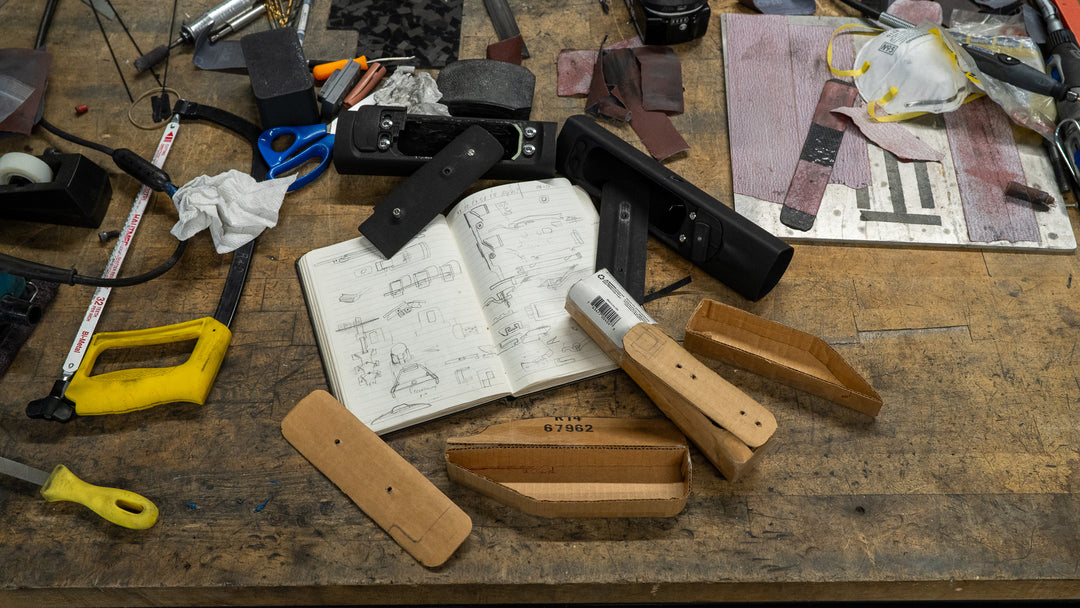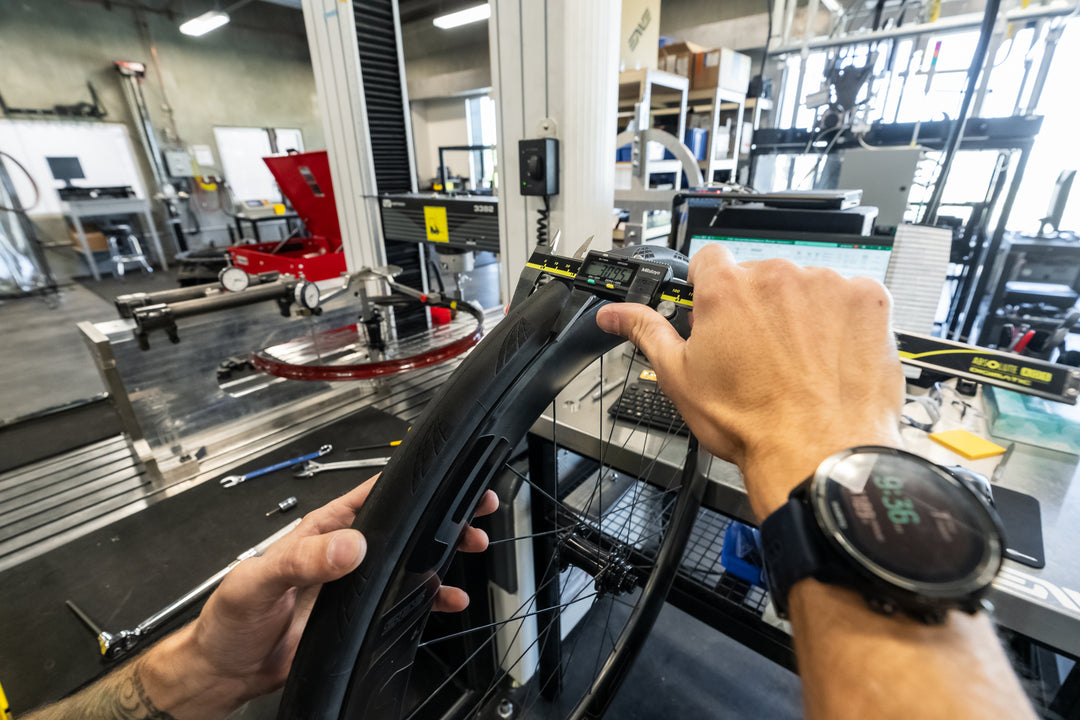Giro d'Italia Preview - Team Dimension Data goes for the GC
Photographs by Ashley and Jered Gruber and Mario Stiehl
The Giro d’Italia is a magnificent race. Every edition is a delight that should be eagerly anticipated and then savored. Rare indeed is the Giro that fails to deliver thrilling racing, drama, wild weather, and incredible scenery.
Several facts make this 101st edition, starting on Friday, even more beguiling. The ‘Grande Partenza’ (Big Start) is in Jerusalem, Israel, making this the first ever Grand Tour to start outside of Europe; Sky’s Chris Froome will attempt to win all three Grand Tours in a row; and it’s also the first Grand Tour to take place under the new rules with eight riders per team.
For ENVE and our partners at Team Dimension Data, the Giro is important for another reason – it will be the team’s first fully committed bid for a Grand Tour podium and a key milestone in ‘Project 2020’, the team’s goal of winning the Tour de France with an African rider by that year. That’s a hugely exciting goal for us at ENVE, too.
It’s no secret that the team has endured a hellish start to the season, with the squad ravaged by injuries and illness, and few results to show for the suffering. A great Giro would turn all that around and, critically, the squad for the Corsa Rosa has made it to May in fine shape, with Louis Meintjes leading. The South African has had a quiet build-up, free from both highlights and problems, but he and his coach know what they’re doing and we think they’ve chosen not to send up a flare with a big performance in a minor race. Meintjes might not be among the top favorites, but that should suit him and the team just fine.
However, the level of competition will be fierce for the GC. The main protagonists include last year’s winner Tom Dumoulin, four-time Tour winner Froome, and 2015 Vuelta champ Fabio Aru, plus Esteban Chaves, second at the 2016 Giro, and Thibaut Pinot, third at the 2014 Tour. Behind them are such talents as Simon Yates, Rohan Dennis, Domenico Pozzovivo, and others who are itching to break through. If Meintjes is to reach the final podium in Rome, he will have to overcome a stellar field.




THE ROUTE
Happily for Team Dimension Data and Meintjes, the route is well suited to him. Here we analyze the key stages for his campaign.
Stage 1 – Jerusalem, 9.7km TT
The opening TT is too long to be called a prologue, but it certainly isn’t a gift to specialists such as Dumoulin and Froome. The city center course is technical and rolling, with many tight corners that will break up the rhythm. The time gaps shouldn’t be too big.
Stage 6 – Caltanissetta to Etna, 163km
The GC battle is set to ignite early, thanks to this stage to Mount Etna. After a lumpy 130 kilometers to soften the legs a little, the riders are faced with a 30km climb almost from sea level to 1,736m. This year the race takes a different route to the top in the hope of avoiding the wind that flattened the action in 2017. Most of the ascent is steady, but the final kilometers are 8%, steep enough to favor the best climbers. While significant time gaps are unlikely, it will show us who is on form.
Stage 8 – Praia a Mare to Montevergine Di Mercogliano, 208km
While in profile this summit finish looks like an opportunity, in reality the climb just isn’t hard enough, averaging only 5% for 15km. Expect the main contenders to all finish together and as none of them has a note-worthy sprint the stage is likely to go to an outsider with a good kick, or perhaps a non-GC rider brave enough to attack early.
Stage 9 – Pesco Sannita to Gran Sasso D’Italia, 224km
This is the sort of stage on which underdog status can be a benefit. It’s lumpy for 180km and then appears to climb for 44km to the finish. The majority of it is gradual so it will be up to the big stars and their big teams to set the tempo and control any dangerous attacks, allowing a dark horse on a smaller team – Meintjes – to sit in the wheels and conserve energy for the 4km, 8% finale.
Stage 14 – San Vito Al Tagliamento to Monte Zoncolan, 181km
When we interviewed Louis Meintjes before the season; read it here, he told us that he prefers a mountain stage to be hard all day, rather than an easy run to one full-gas climb. Well, he got his wish with stage 14, which features four categorized climbs on the way to the mighty Monte Zoncolan, two of them stacked up close to it. That’s sure to thin out the group of leaders and, crucially, their helpers. The race to the last climb will be dictated by the team with the most strength in depth. After that, it’s every man for himself on the 10km, 12% Zoncolan, in as pure a battle of climbing ability as you will ever see. There are long sections at 15%, and short ramps topping 20%, so it’s made for a flyweight such as Meintjes and it’s an opportunity he will have to grab with both hands. With the TT looming, he must gain time.
Stage 15 – Tolmezzo to Sappada, 176km
This is another mountain stage, but it’s perhaps more of a threat than an opportunity. It’s uphill for 48km from the start, then packs in three stinging climbs at the end. Everyone will be tired after the Zoncolan, so the best conditioned riders and teams will rise to the fore and anyone struggling will be in for a horrid day.
Stage 16 – Trento to Rovereto, 35km TT
This is a super-fast TT – flat, with long straights where those with the best aero positions and power can make a real difference; expect Froome and Dumoulin to stamp their authority. Even though Meintjes is a much better time triallist than you’d guess from his build, the time gaps here will be significant. He needs to pull out something special to keep his podium hopes alive. Good thing he has the world’s fastest wheels.
Stage 18 – Abbiategrasso to Prato Nevoso, 196km
A flat stage with a 13km climb at the end is exactly what Louis told us he doesn’t enjoy, but he only has to stay in the group today. Prato Nevoso isn’t steep so it’s unlikely to split the GC leaders or prompt attacks, though the more demanding final slopes will see some attrition.
Stage 19 – Venaria Reale to Bardonecchia, 181km
This should be sensational. The penultimate chance for the best climbers to shake up the GC features four climbs, including the mammoth Colle delle Finestre: 17km at 9%, half of which is an incredibly narrow gravel road. The 2,178m summit makes it the ‘Cima Coppi’ of this year’s race, where a prize is awarded for the first rider over the peak of the Giro’s highest mountain. After next passing over Sestrière, the stage climaxes with the 9km Jafferau, also 9%. We’ve seen in the past that Louis has held up well through the third week of Grand Tours while rivals have tired. If that’s the case at the Giro, this is a stage to make it count.
Hopefully it won’t snow.
Stage 20 – Susa to Cervinia, 214km
After a flat, but no doubt nervous, opening 130km, stage 20 has three big climbs: Col Tsecore, Col St Pantaleon, and Cervinia. They are arranged in reverse order of difficulty, encouraging early attacks. It’s Hail Mary time, and maximum stress for whoever is in the pink jersey and their team. With so many talented climbers in GC contention, anyone within three minutes of the lead will be considered a threat if they attack early – remember Vincenzo Nibali’s mugging of the race in 2016? – and that could prove difficult for even a big team to control, let alone a smaller one. The stage is set for a classic Giro climax before the prosecco-wielding procession, sprint, and final podium the following day in Rome.
For details of every stage, visit the official website https://www.giroditalia.it/eng/route/








